Get ready to be captivated by the brilliance and radiance of an oval diamond, a truly remarkable and distinctive choice for your engagement ring.
Oval diamonds belong to the category of fancy-shaped diamonds, boasting an elongated design that creates an illusion of a larger size compared to other diamonds of similar carat weight.
As you embark on your search for the perfect oval diamond, having an oval diamond size chart at your fingertips will prove to be invaluable.
The oval diamond size chart serves as a helpful tool in comprehending the various dimensions of oval diamonds and their relative comparisons. However, remember that carat weight is not the sole factor to consider when selecting an oval diamond.
Don’t fret, though! This comprehensive guide has got you covered with all the essential information about oval diamonds, empowering you to make an informed decision.
Without further delay, let’s delve into the enchanting world of oval diamonds!
DESIGN YOUR OWN ENGAGEMENT RING: START WITH A SETTING OR START WITH A DIAMOND. IT’S REALLY UP TO YOU!
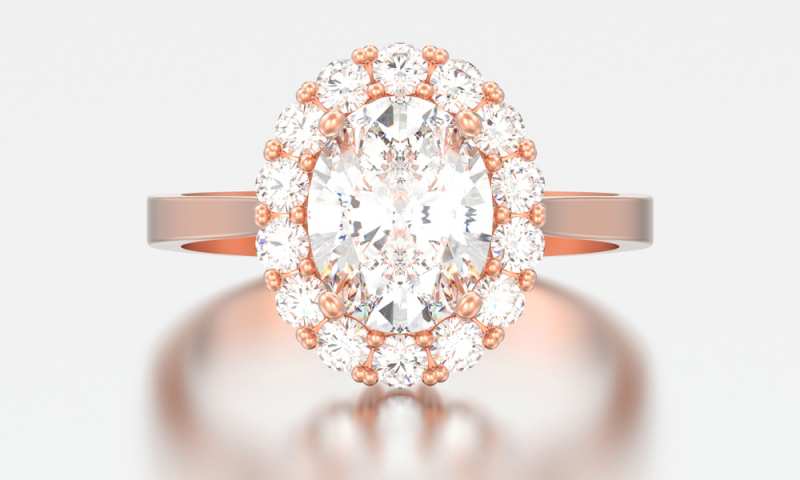
Oval Diamond: History
Oval diamonds have enjoyed enduring popularity throughout history, with the earliest known version of this diamond shape dating back to the 1300s. However, it wasn’t until the 1800s that they were officially recognized by the name “oval” in literature.
In 1957, a skilled Russian cutter named Lazare Kaplan revolutionized the art of oval diamond cutting. Kaplan possessed a remarkable talent for transforming rough and undesirable diamonds into stunning gemstones of exceptional beauty.
The cutting technique pioneered by Lazare Kaplan continues to be employed by diamond cutters today, resulting in the creation of exquisite oval cut diamonds. In the present era, the oval diamond holds a prominent position as one of the most sought-after and fashionable diamond shapes.
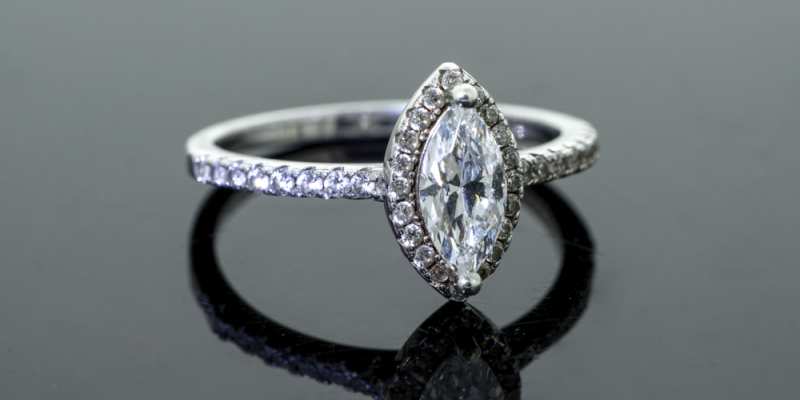
Oval Diamond: Cut Quality
The cut of a diamond plays a pivotal role in determining its overall quality, influencing its inherent beauty, brilliance, and ability to reflect light. While the Gemological Institute of America (GIA) provides cut grading for various diamond shapes, it does not include specific guidelines for oval cut diamonds.
Why is this the case? Well, the standard cut parameters do not directly apply to the intricate and distinctive structure of an exceptional oval diamond.
It’s important to note that there is no universal formula for depth percentage and table percentage that guarantees a perfect cut for oval diamonds. Any cut recommendations for ovals should be regarded as general guidelines and subject to individual interpretation.
Ultimately, the beauty of an oval diamond is best assessed by what you perceive with your own eyes. Take the time to thoroughly examine oval diamonds and, if possible, seek the guidance of a diamond expert. Rather than relying on hope alone, ensure that you make an informed decision.
To provide a loose reference for an excellently cut oval diamond, we present our general variables for assessing cut quality below:
| Excellent | Very Good | Good | Fair | Poor | |
|---|---|---|---|---|---|
| Table % | 53-63 | 52 or 64-65 | 51 or 66-68 | 50 or 69-70 | <50 or >70 |
| Depth % | 58-62 | 56-57.9 or 62.1-66 | 53-55.9 or 66.1-71 | 50-52.9 or 71.1-74 | <50 or >74 |
| Girdle | Very thin – Slightly thick | Very thin – Slightly thick | Very thin – Thick | Very thin – Very thick | Extremely thin – extremely thick |
| Culet | None | Very small | Small | Medium | Medium |
| Lenght-To-Width Ratio | 1.35-1.50 | 1.30-1.34 or 1.51-1.55 | 1.25-1.29 or 1.56-1.60 | 1.20-1.24 or 1.61-1.65 | >1.20 or <1.65 |
Please remember that these variables are general in nature and should not be solely relied upon without personally inspecting the gem and seeking advice from an expert.
The Bowtie Effect in Oval Diamonds
Due to their elongated and fancy shape, nearly all oval diamonds exhibit a phenomenon known as the bowtie effect, characterized by a dark area that appears to stretch across the center of the diamond.
The intensity of this dark spot can vary from one diamond to another. In some instances, it may be quite noticeable, while in others, it may be barely perceptible.
However, an oval diamond with a pronounced bowtie effect can detract from the stone’s overall beauty. It is crucial to ensure that you avoid selecting an oval diamond with a prominent bowtie.
We strongly recommend having a diamond expert carefully examine your chosen diamond prior to making a purchase. Their professional evaluation will provide valuable insight and help you make an informed decision.
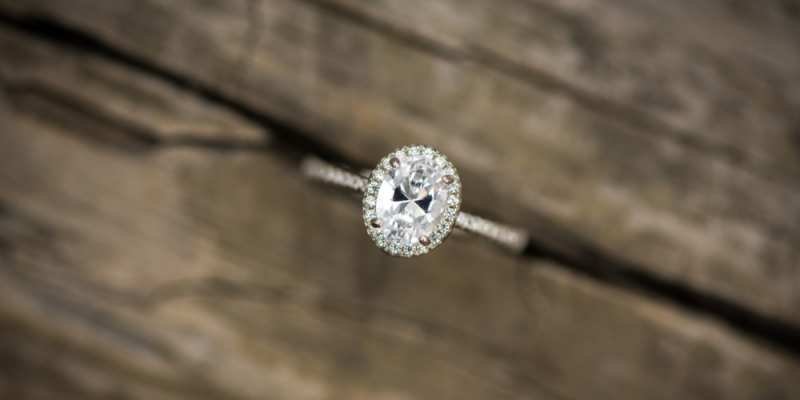
Oval Diamond: Length-To-Width Ratio
The length-to-width ratio of a diamond provides insight into its proportions and how well it aligns with its intended shape. To determine the length-to-width ratio, simply divide the length of the stone by its width.
For instance, if a diamond measures 5.5 millimeters in length and 3.5 millimeters in width, its length-to-width ratio would be 1.57.
While the ideal length-to-width ratio for an oval diamond largely depends on personal preference and style, a range of 1.30-1.50 is typically considered visually appealing.
It’s essential to examine multiple oval diamonds to determine which length-to-width ratio is most aesthetically pleasing to you. By doing so, you can find an oval diamond that matches your desired proportions and fits your individual taste.
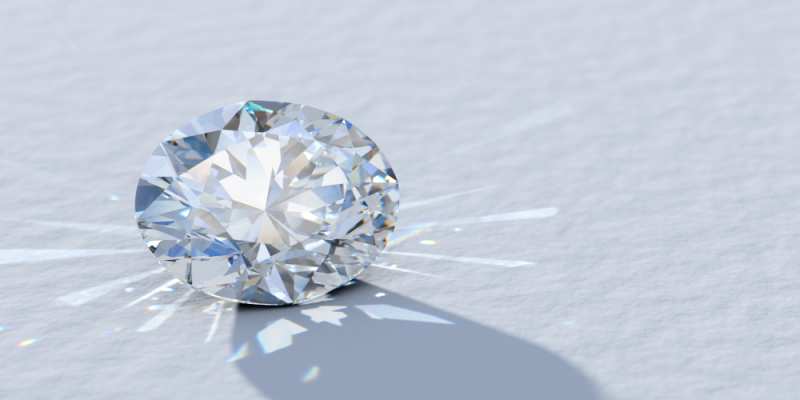
Oval Diamond: Clarity
The unique shape of oval diamonds provides a natural advantage in concealing blemishes and inclusions.
Imperfections located near the rounded edges or in areas where the jewelry setting will be placed are exceptionally difficult to detect.
For this reason, we suggest considering clarity grades of SI1 or SI2, as they offer excellent value. While you have the option to choose higher clarity grades, the difference in visibility to the naked eye is typically negligible.
By opting for a slightly lower clarity grade, you can allocate more of your budget towards maximizing other factors such as cut or carat weight, allowing you to create a stunning diamond ring while making the most of your resources.
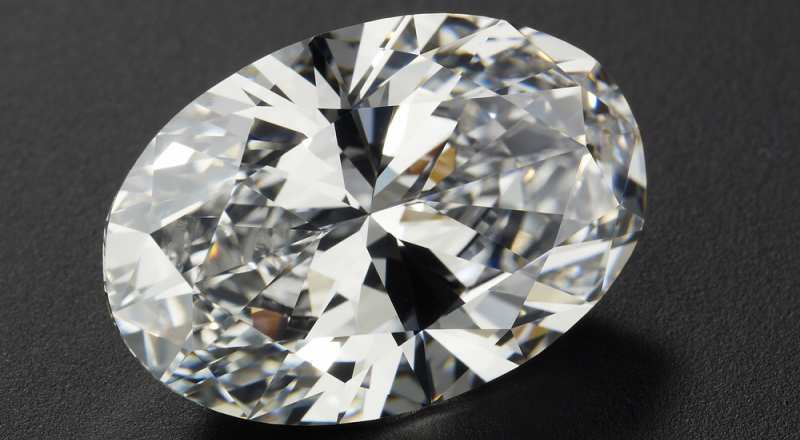
Oval Diamond: Color
Diamond color is assessed by the GIA on a scale ranging from D to Z. Diamonds with a Z color grade exhibit noticeable yellow or brown hues, while D color grade represents the highest level of colorlessness.
Although it is generally challenging to visually discern the distinction between two color grades, the price disparity can be significant.
Since detecting slight variations in color grades with the naked eye is difficult, it is advisable to focus on how the color appears to you personally. As a general guideline for oval diamonds, aim for an H color grade or better. This ensures that your diamond will appear white when set in platinum or white gold.
If you plan to set your diamond in rose or yellow gold, you can consider dropping down to a J color grade to save some money or choose a larger gemstone.
By considering these factors, you can make an informed decision that aligns with your preferences and budget while ensuring the overall beauty of your oval diamond.
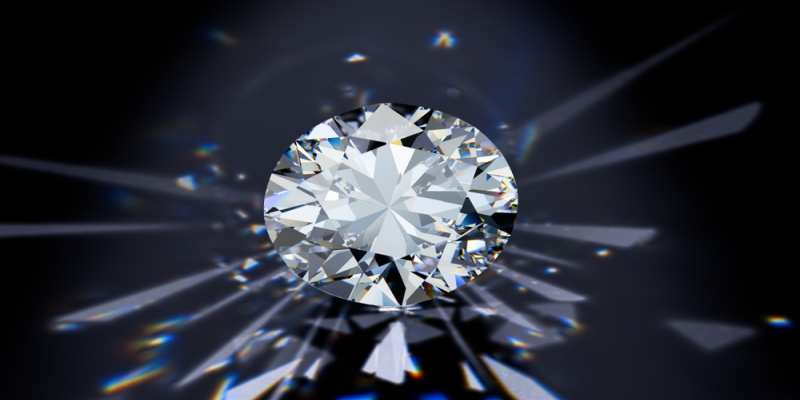
Oval Diamond: Prices
Compared to round diamonds with similar cut quality, clarity, color, and carat weight, oval diamonds typically offer a more affordable option.
The cost advantage of oval diamonds stems from their cutting process, which utilizes a larger portion of the rough stone. With less wastage during cutting, oval diamonds provide excellent value for money compared to many other diamond shapes, especially when considering the cost per carat.
Similar to diamonds of any shape, the price per carat for oval diamonds rises exponentially as the carat weight increases. Therefore, as you move towards larger carat sizes, the price will increase accordingly.
Considering these factors, oval diamonds present an enticing choice for those seeking a balance between affordability and impressive carat weight.
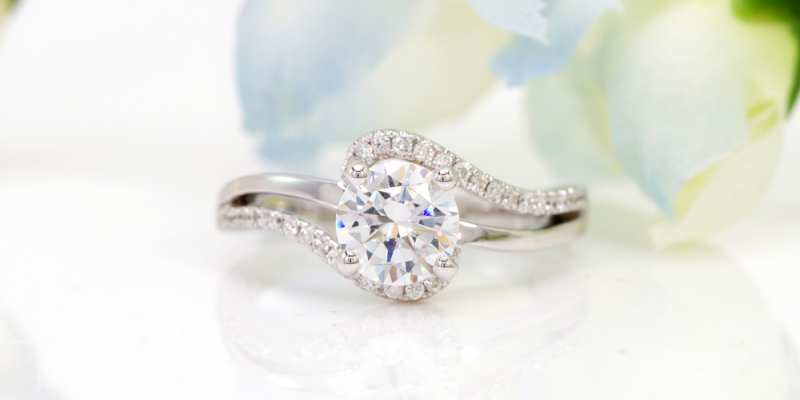
Oval Diamond: Size Chart
Oval diamonds, like all diamonds, are categorized and sold based on their carat weight. The following chart displays the corresponding length and width measurements for different carat weights of oval-cut diamonds:
Oval-Cut Diamond Sizes
| Carat Weight | Size In Millimeters |
|---|---|
| 0.25 carat | 5*3.5 millimeters |
| 0.50 carat | 6*4 millimeters |
| 0.75 carat | 7*5 millimeters |
| 1.00 carat | 7.7*5.7 millimeters |
| 1.25 carat | 8*6 millimeters |
| 1.50 carat | 8.5*6.5 millimeters |
| 2.00 carat | 9*7 millimeters |
| 2.5 carat | 10*8 millimeters |
| 3 carat | 12*8 millimeters |
| 4 carat | 12.9*8.6 millimeters |
| 5 carat | 13.9*9.3 millimeters |
| 6 carat | 14.5*10 millimeters |
It’s important to note that the chart provides average measurements for oval diamonds, considering their typical length-to-width ratios. However, individual gems may have slightly different measurements depending on their specific length-to-width ratio.
For the most visually appealing oval diamond, we recommend adhering to our previously mentioned guidelines and selecting a stone with a length-to-width ratio ranging from 1.30 to 1.50. By following these recommendations, you can ensure that your oval diamond showcases its beauty to its fullest potential.
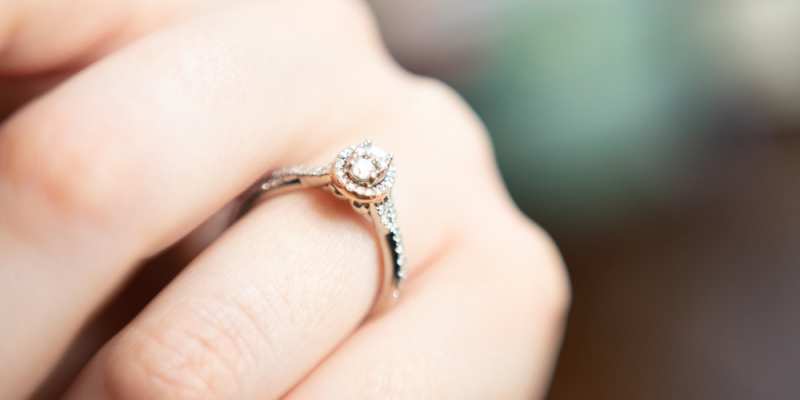
Best Settings For Oval Diamonds
Oval cut diamonds offer versatility and can enhance the beauty of various ring settings. However, the most recommended settings for oval diamonds typically involve 4 or 6 prongs, as they showcase the shape of the stone effectively.
Bezel settings can also complement oval diamonds nicely. Some oval diamond engagement rings, especially those featuring three to five diamonds, incorporate 4 or 6 prongs for the center stone along with a bezel setting to secure the side stones.
When it comes to style, an oval diamond ring can be paired with almost any type of setting. However, there are a few particular styles that work exceptionally well with oval diamonds. Here are some of the best ring settings:
Halo Settings: A halo of smaller diamonds surrounding an oval diamond enhances its radiance and adds character to the overall look. Halo settings beautifully showcase oval diamonds, regardless of their carat weight.
Solitaire Settings: The simplicity and timeless appeal of a solitaire setting allow the oval diamond to take center stage. Whether in yellow or rose gold, a solitaire ring remains a classic choice.
Side-Stone Settings: Incorporating side stones, regardless of the number, adds elegance and extra sparkle to the oval shape, further enhancing its beauty.
Pave Settings: Pave rings with their intricate designs and added sparkle can enhance the beauty of any oval diamond. From solitaire-style pave rings to twisted bands, pave settings provide additional character and elegance.
By considering these recommended ring settings, you can choose a style that perfectly complements your oval diamond and reflects your personal taste and preferences.
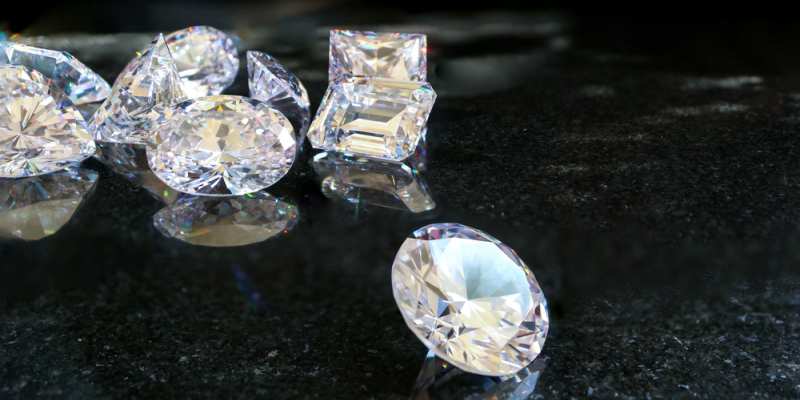
Oval Vs. Round Diamonds
While oval and round diamonds may have a similar overall appearance, there are several key differences that distinguish these two diamond shapes.
First and foremost, the shape itself sets them apart. As the names suggest, round diamonds are perfectly round, while oval diamonds can come in various oval shapes. The length-to-width ratio determines whether the oval shape is slender, normal, or wide.
The second difference lies in the level of brilliance. Both oval and round diamonds are brilliant cuts, designed to maximize light reflection and create dazzling sparkle. They both have 58 facets. While a round diamond typically exhibits slightly better sparkle than an oval diamond under the same conditions, the difference is subtle, as both shapes offer an excellent level of sparkle and fire.
The third difference is the perceived size. Due to its elongated shape, an oval diamond appears slightly larger than a round brilliant diamond of the same carat weight. This makes oval diamonds a great choice if you desire a stone that looks bigger than its actual carat weight.
The fourth and final difference is the price. Round brilliant diamonds tend to be more expensive on a per-carat basis because a significant amount of the rough diamond is discarded during the cutting process. On the other hand, oval diamonds utilize a larger portion of the original rough stone, making them generally more affordable on a per-carat basis.
Considering these differences, you can make an informed decision based on your preferences, budget, and the desired visual impact of the diamond shape.
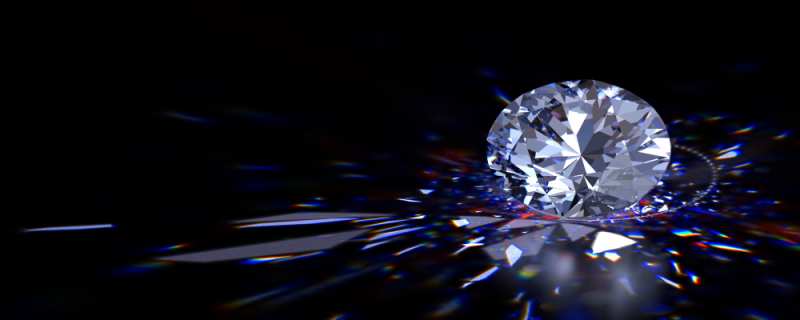
Oval Diamond Size Chart On Hand – How To Choose The Right Size?
When referring to the oval diamond size chart, it’s important to consider more than just the carat size. Take into account all the factors mentioned earlier to make an informed decision.
Before you begin diamond shopping, determine your priorities, personal style, and budget. This will help you choose the perfect oval diamond that aligns with your preferences.
Keep in mind that the price of a diamond can vary significantly with changes in carat size. Doubling your budget is a general guideline when stepping up in carat size. Therefore, it’s crucial to establish your budget beforehand, as it will greatly influence the appropriate carat size for you.
Remember that everyone’s hands are unique, and different gem sizes and shapes will appear differently on each person. Oval diamonds are particularly suitable for enhancing the finger’s length due to their elongated shape.
As previously mentioned, factors such as color, clarity, and cut are equally vital considerations when selecting an oval diamond. However, the decision regarding which qualities to prioritize is entirely up to you and your individual preferences.


